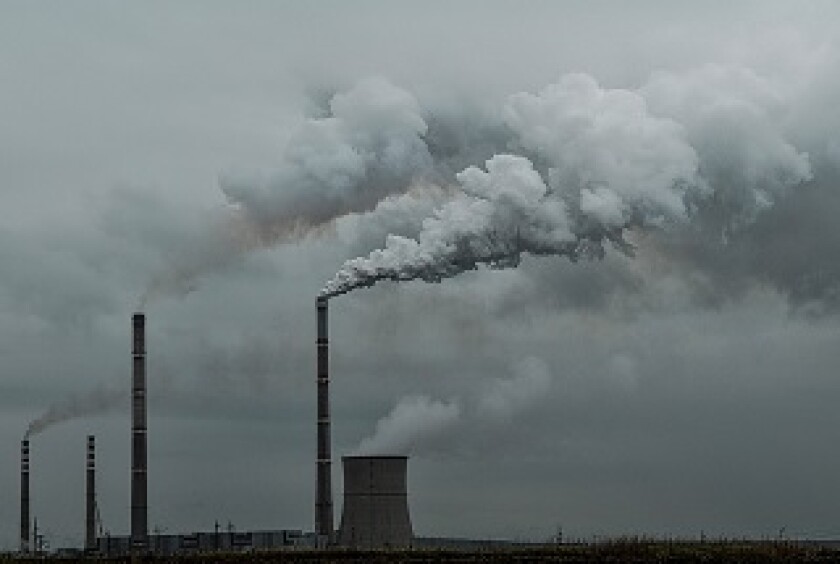|
|
Taxation could prove to be a key method for combatting global warming |
Global revenue from carbon pricing rose by 50% in 2017 compared to 2016, says a new report from the World Bank. While companies can expect green taxes to keep rising, this statistic doesn't quite tell the whole story.
The report, said that 45 national jurisdictions and 25 sub-national jurisdictions have adopted carbon pricing initiatives, raising $33 billion in 2017 – 50% up from the $22 billion raised in 2016.
China is set to enact its emissions trading scheme (ETS) in 2018, which will make a big difference to the numbers, and this could contribute to the total annual value (not revenue) of carbon pricing initiatives rising 58% from $52 billion to $82 billion in 2018.
"Governments at all levels are starting to see the effectiveness of carbon pricing in their efforts to cut harmful carbon pollution while also raising revenues for climate and other policies, including environmental action," said John Roome, World Bank senior director for climate change.
"As countries take stock of their Paris Agreement commitments and set a path towards increased ambition, carbon pricing mechanisms with robust pricing levels are proving to be essential elements of the toolkit."
The global environmental tax take will continue to rise
A key accelerator of growth is the rise of carbon tax rates in jurisdictions that already have such policies in place, most notably France. France's carbon tax was first introduced on April 1 2014 at a rate of €7 ($8.20) per tonne of carbon dioxide (CO2) equivalent. The tax rose incrementally to €14.5/tonne in 2015, €22/tonne in 2016 and then €30.50/tonne in 2017.
Such increases are particularly significant as at lower levels there is no direct price impact for companies as France's domestic consumption tax (DCT), of which the carbon tax is a component, is already higher than the carbon tax and the two components do not 'stack'.
France's carbon tax will continue to rise, having already jumped to €44.60/tonne for 2018, to €55/tonne in 2019, €65.40/tonne in 2020, €75.80/tonne in 2021 and €86.20/tonne in 2022.
"That's going on an upward, quite ambitious path," Kurt van Dender, head of the tax and environment unit at the OECD, told International Tax Review. "They [France] increased it in 2017 and 2018 and will keep doing so. That will have a big effect."
Van Dender said that he is not surprised by the 50% rise in global carbon tax/ETS revenue, but cautioned that "it's a big percentage change of a very small number". In the example of France, the senior tax economist said: "That's a high tax, and if you start from a low base then it's a big percentage change."
Another key driver of rising green tax revenues is the implementation of new initiatives in jurisdictions in the Americas such as Chile and Colombia, as well as the US states of California, Massachusetts and Washington and the Canadian provinces of Ontario and oil-rich Alberta.
"Off the top of my head, all of these taxes are certainly below €7 per tonne," said van Dender. "Often, these taxes are set with the ETS price of €7 in mind. So these are very, very low numbers."
"But given that all of the other carbon taxes and ETSs also show quite low numbers, it's still quite a big percentage change."
In December 2017, China announced a plan to phase in its national emissions trading scheme (ETS). This would be done sector by sector, in a similar manner to which the country brought in VAT, and the power sector will be the first to come under the ETS.
EU emissions trading scheme
Another driver for increased carbon pricing revenues will be the EU's ETS. The scheme, which Iceland, Liechtenstein and Norway also take part in, operates on a 'cap and trade' principle. Companies receive or buy 'emission allowances', which they can trade among themselves. Having a market-based system means, theoretically, that emissions will be cut most where it costs least to do so.
The EU ETS is in its third phase, spanning from 2013 until 2020. In this phase, more industry sectors are included and auctioning emission allowances, rather than giving them out for free, is the standard. Both of these changes increase the tax intake.
It's also worth noting that carbon dioxide emissions rose in the EU in 2017, in tandem with the economy grew.
"As the economy does better, the cap becomes more stringent – that's quite an important effect, an important explanation, in terms of the upward pressure on prices in emissions trading systems and how they actually work," said van Dender.
But, despite companies having to pay a higher market rate for emission allowances, as they are buying from each other in a market system this does not lead to an increase in revenue from the ETS, just in its 'value'.
California, which emits the most carbon dioxide of any US state apart from oil-rich Texas, is among the jurisdictions which has brought in an ETS recently.
"You'll also have higher prices in the emission trading scheme in California beginning to show in 2017 and probably more strongly in 2018," said van Dender. "There's a bit more trading there."
|
|
Emission trading schemes are also part of the World Bank’s report |
Excise taxes dwarf carbon taxes and ETSs
Where the 50% increase in green taxes figure becomes misleading is that there are other taxes – excise taxes, mainly – which have the same economic effect as taxes usually considered 'green' or 'environmental' taxes on carbon.
"You have carbon taxes and ETSs, which are instrumental for putting taxes on carbon," said van Dender. "But then, you can also look at excise taxes on energy, which can also put a price on carbon."
"Even if they're not introduced with that intention, they still have the same economic effect. That's what we here at the OECD call the effective carbon rate," he continued. "The effective carbon rate, to us, is the sum of: specific excise taxes on energy use, carbon taxes and ETSs."
The global excise tax take on carbon-related goods is $421 billion, according to the OECD, dwarfing the $33 billion sum of carbon pricing initiatives.
As the $421 billion figure remained effectively static in 2017, the $11 billion increase in carbon-related tax take can be expressed as a far more modest 2.6 percentage point increase.
"If you really think of excise taxes – as we should, from an accounting point of view – as being part of the overall carbon pricing system, excise taxes completely dominate the picture compared to carbon taxes and ETSs," said van Dender.
In addition, in many jurisdictions VAT/GST is charged on goods after excise rates are applied, compounding the price effect.
Carbon taxation in the future
This is not to say, however, that progress in the carbon pricing arena is negligible. Van Dender expects changes to become more significant in numerical as well as percentage terms in the coming years, for many of the reasons explained above.
He also adds that China's roll-out of its ETS, starting this year with the power sector, "will make a huge difference".
If revenues from such initiatives continue to rise, they could even be a shot in the arm for government revenues in the context of falling corporate tax rates around the world.













